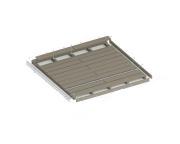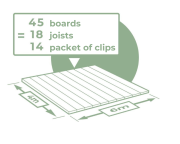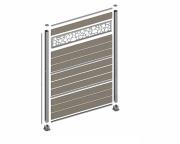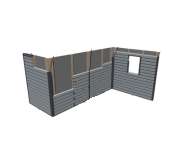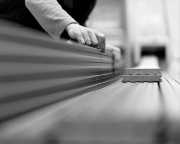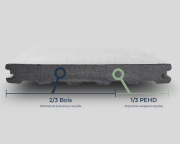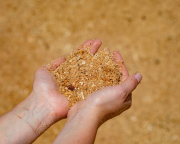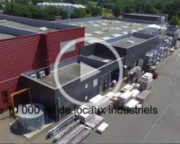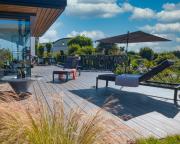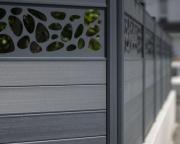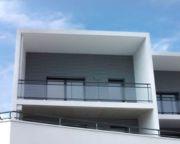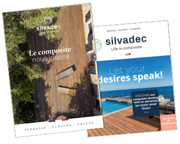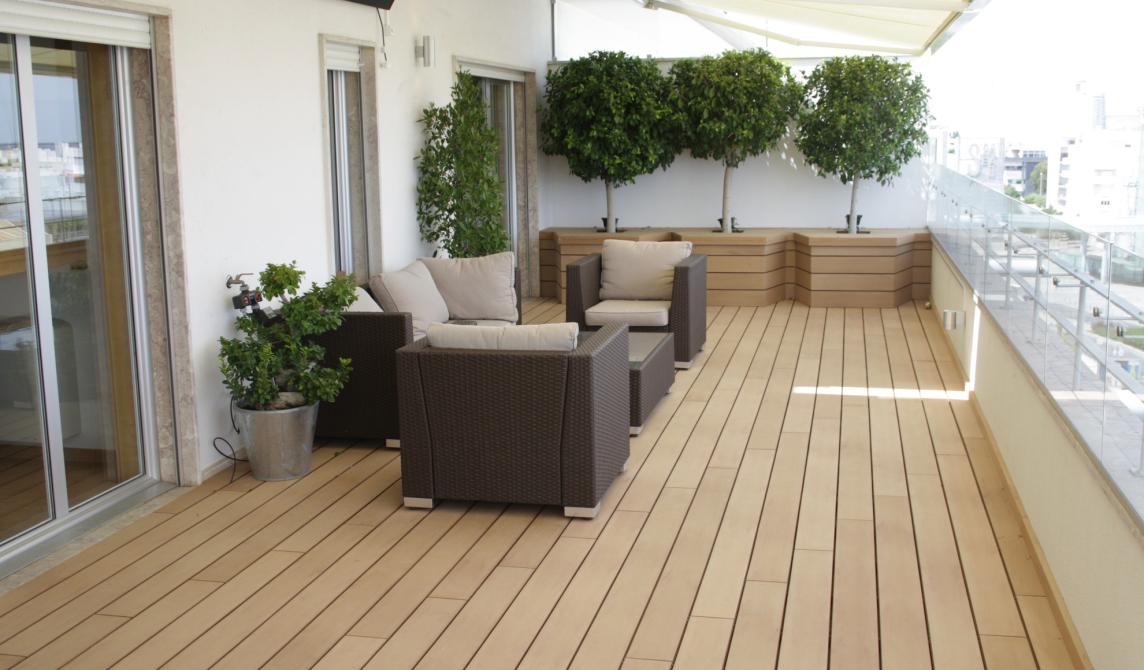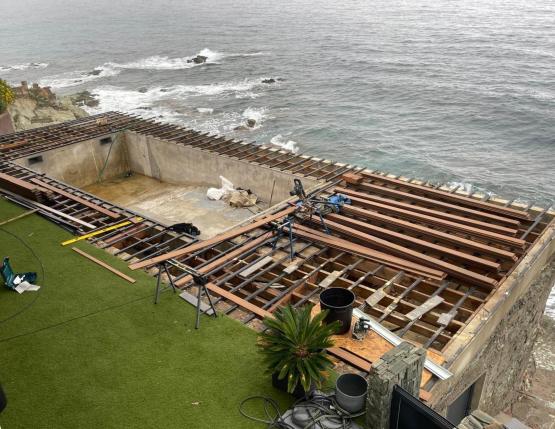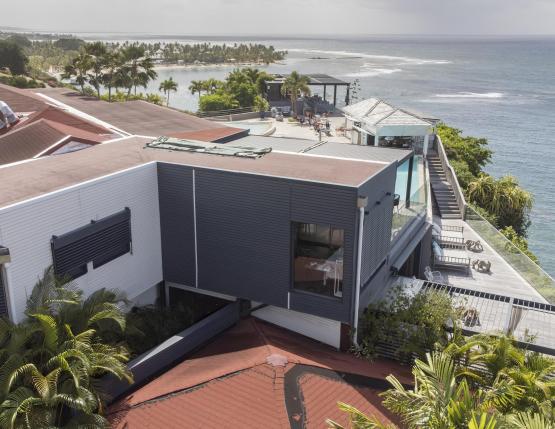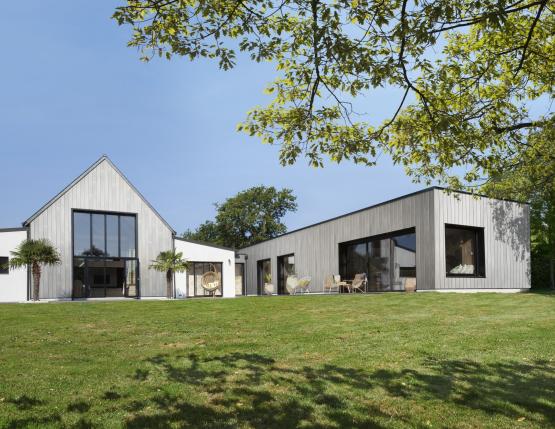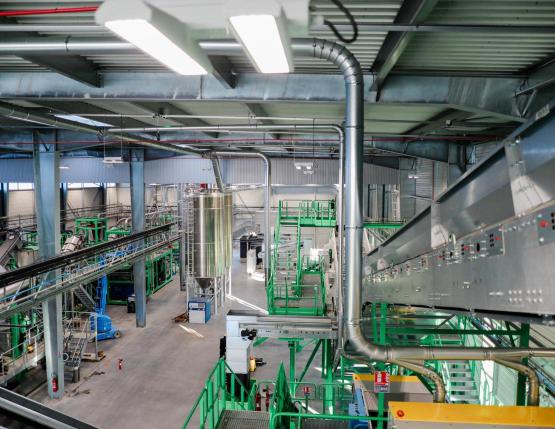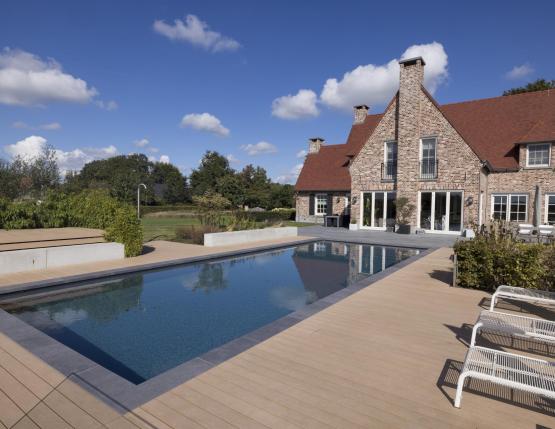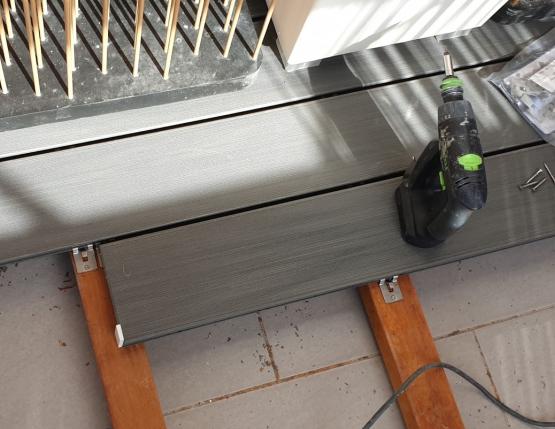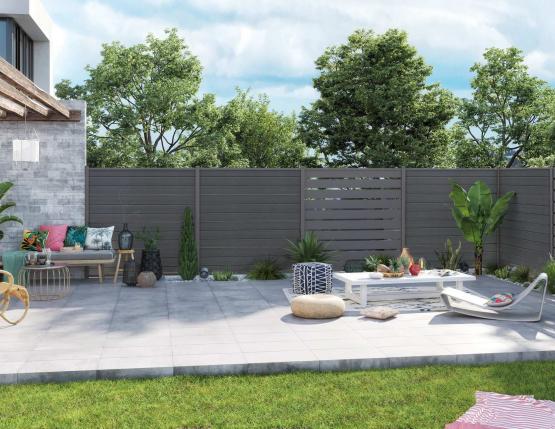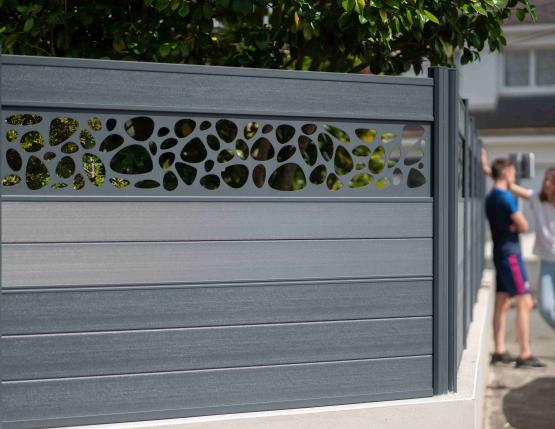The Balcony: A Precious Space to Transform
The balcony is a precious space that can be transformed into a true haven of peace. Whether you are a homeowner or a professional, making the right choice for your wooden deck is essential. Here is a detailed guide to the six key elements to consider for creating a welcoming outdoor space.
Types and Species of Wood
Natural Woods
Natural wood species, such as pine, teak, or larch, are appreciated for their warm aesthetics and authenticity. Pine, for example, is often more affordable and offers a beautiful light color, while teak is recognized for its durability and weather resistance.
Advantages of Natural Wood
- Aesthetics: Natural wood provides a warm and authentic atmosphere, creating a welcoming and friendly outdoor space.
- Ecological: By choosing FSC-certified wood, you support responsible forest management, promoting environmental sustainability.
- Durability: Certain species, like teak, resist weather well and can last for years with proper maintenance.
- Versatility: Natural wood can be stained or left raw, thus adapting to different styles and aesthetic preferences.
Disadvantages of Natural Wood
- Maintenance: Natural wood requires regular maintenance, such as applying stains or oils, to prevent graying, wear, and damage caused by moisture and insects.
- Weather sensitivity: Without adequate protection, it can warp, crack, or lose color when faced with climate variations.
- Maintenance cost: In the long term, maintenance products and repairs can represent an additional investment compared to other materials.
- Aging: Even with good maintenance, natural wood can deteriorate more quickly than composite materials, especially in humid environments.
Composite Wood
Composite wood is manufactured from wood fibers mixed with polymers, giving it great strength and low maintenance requirements.
Advantages of Composite Wood
- Durability: Composite boards are extremely resistant to weather, UV rays, and insects, making it a material of choice for outdoor environments exposed to the elements.
- Minimal maintenance: Unlike natural wood, composite wood only requires simple cleaning with soapy water, thus reducing the need for expensive maintenance products.
- Extended lifespan: Thanks to its resistant composition, composite wood maintains its appearance and performance for years, with little necessary maintenance.
- Comfort: Without splinters, composite wood offers a smooth and secure surface, ideal for walking barefoot, especially on outdoor living spaces like balconies.
- Custom-made: Special lengths on request, which allows adaptation to logistical constraints and balcony dimensions.
Disadvantages of Composite Wood
- Cost: While the initial investment in composite wood may be higher than natural wood, it often remains more affordable than certain
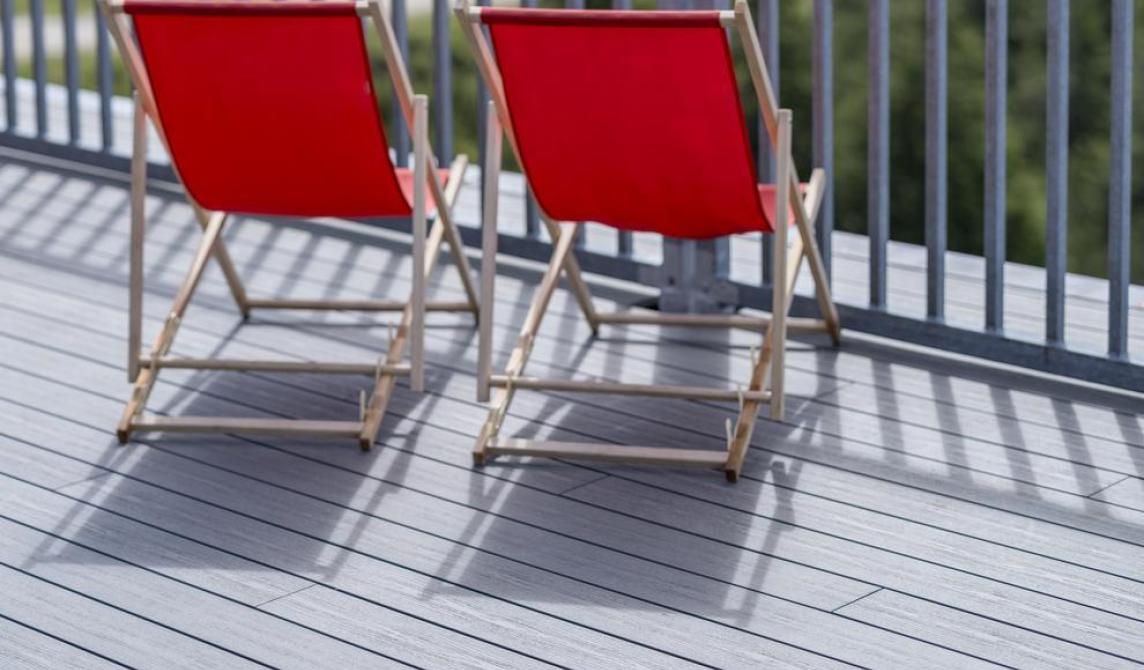
Decking Board Selection
The choice of decking boards is crucial, both for aesthetics and safety. Here's what you need to consider:
Types of Boards
Wider decking boards create a uniform and modern surface, which is particularly suitable for clean and contemporary designs, while minimizing the number of visible joints. On the other hand, narrower boards bring dynamic and visually interesting texture, allowing you to play with patterns and give character to the space. This variation can also influence the perception of space, as narrow boards can make a balcony appear longer and more elongated. Finally, the choice of board width must take into account the overall style of the layout and the desired effect.
Safety
When choosing decking boards, it is crucial to opt for those that present good slip resistance, especially in humid environments or those exposed to water, to guarantee user safety. Silvadec's Atmosphere range boards, for example, in composite wood stand out for their excellent R13 rating according to DIN 51130 standard, which attests to their effectiveness in preventing falls.
Solid wood can also offer slip resistance, but it requires regular maintenance to maintain its anti-slip properties.
By choosing suitable materials, you ensure not only the aesthetics of your balcony, but also the safety and durability of your outdoor layout.
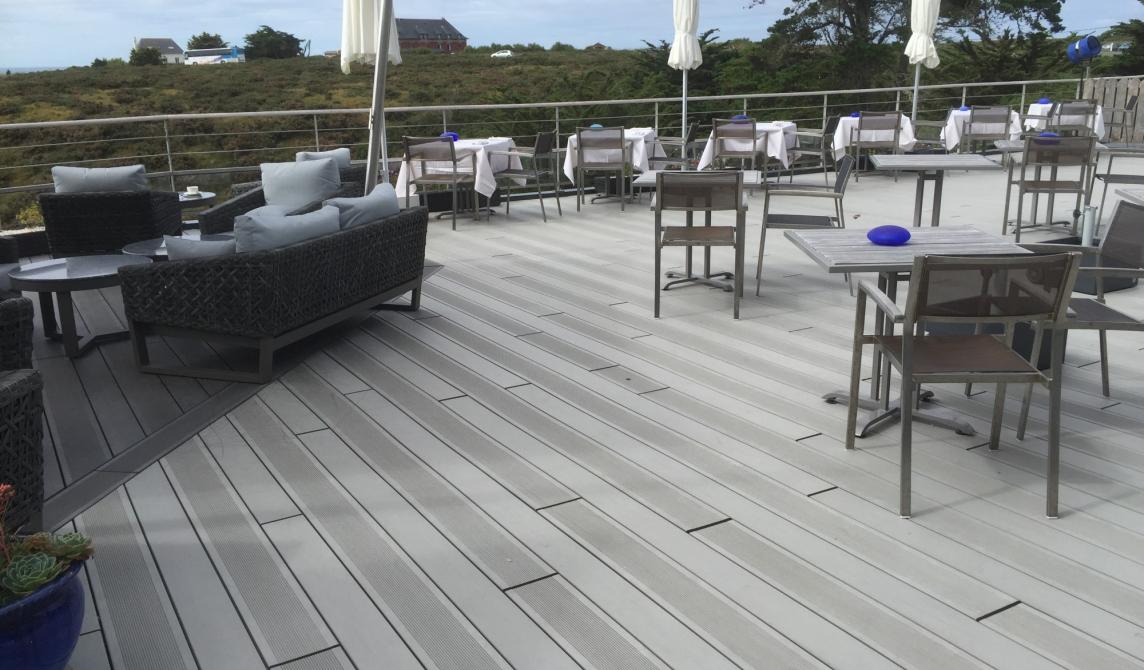
The Aesthetic Aspect
The choice of colors and finishes for decking boards is essential to harmonize the aesthetics and ambiance of your outdoor space, while ensuring the safety and durability of materials.
Color Choice
The choice of decking board color influences aesthetics, ambiance, and integration with the environment. Opt for harmonious tones with your setting, considering the effects of light and color durability. Warm tones create a welcoming atmosphere, while neutrals offer a modern look. Finally, personalize your space by using colors to accent and energize your balcony.
Finish
The choice of finish for wood boards, whether natural or composite, is crucial for the aesthetics and safety of your deck. Brushed finishes offer a pleasant texture to the touch and improve grip, thus reducing the risk of slipping. On the other hand, smooth finishes may seem elegant, but they can become slippery when wet, which can pose a risk. Furthermore, a good finish protects the material against weather and wear, thus ensuring the longevity and minimal maintenance of your deck.
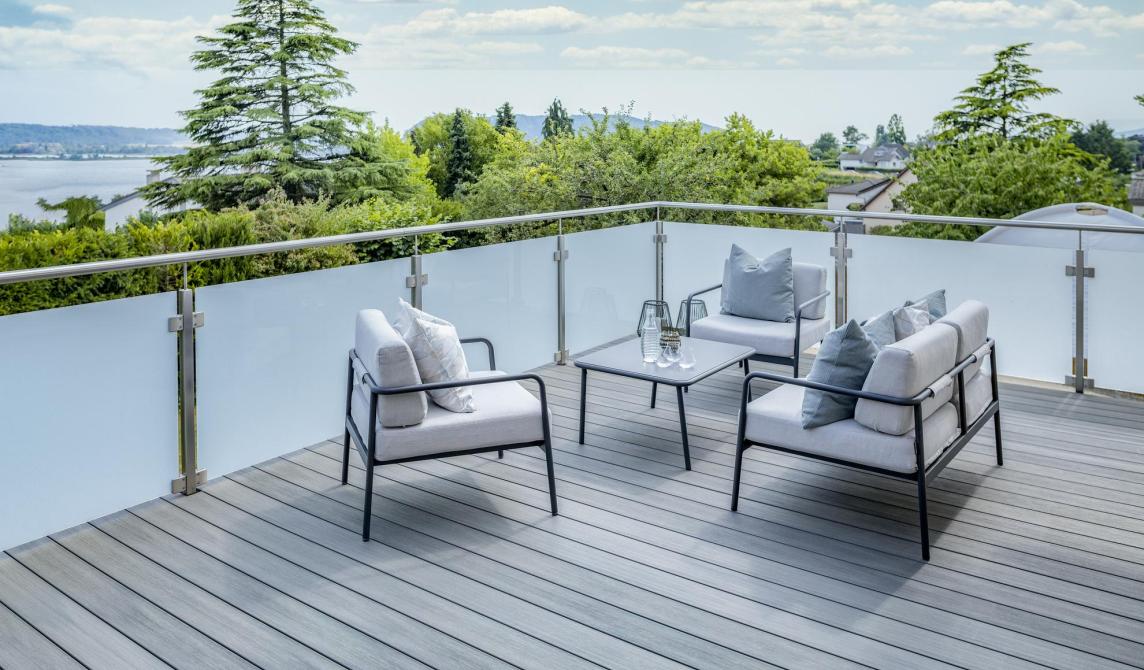
Brushed Atmosphere deck board Cayenne grey, 138mm SILAM1603
Technical Specifications for Balcony Installation
Installing decking boards on a balcony requires compliance with strict safety standards due to its height, while the narrowness of the space limits working methods and the type of materials that can be used. This requires specific skills and meticulous attention. Here are some important elements to consider:
Height and Extent
Height
Since balconies are often located at high levels, it is imperative to respect strict safety standards during installation to guarantee the protection of workers and passersby below. This includes the use of safety equipment such as harnesses, helmets, and protective barriers to prevent falls. Additionally, local regulations may require specific measures, such as guardrails that comply with safety standards, which requires particular attention during design and installation. Rigorous planning is therefore essential to ensure that all safety standards are met, while enabling efficient and safe work.
Narrowness
The limited width of balconies also poses logistical challenges, restricting the available working methods and the type of materials that can be used. This space constraint can make the use of heavy equipment or large machines difficult, thus requiring more precise and manual working techniques. Consequently, it may be necessary to choose lighter or easier-to-handle materials, such as narrower decking boards or innovative fastening systems. This narrowness can also influence the arrangement of elements, requiring clever design choices to maximize space utilization while maintaining harmonious aesthetics.
Logistics
Logistics plays a crucial role in installing a deck on a balcony, especially at height, where direct access is limited. Meticulous planning of material supply is therefore essential to guarantee smooth and efficient installation. This may include coordinating deliveries and renting equipment, such as a lift, to transport boards and accessories from the ground to the balcony. By anticipating these logistical challenges, you minimize the risks of delays, accidents, and material damage, thus ensuring that the project proceeds under the best conditions.
Protection
Safety during deck installation on a balcony is paramount, particularly to protect passersby and workers on the construction site. Protective nets must be installed to prevent material falls, while the use of safety equipment such as harnesses, helmets, and barriers is essential for workers at height. Additionally, clear signage can be put in place to warn passersby of risk areas. These precautions considerably reduce accidents and ensure a safe working environment.
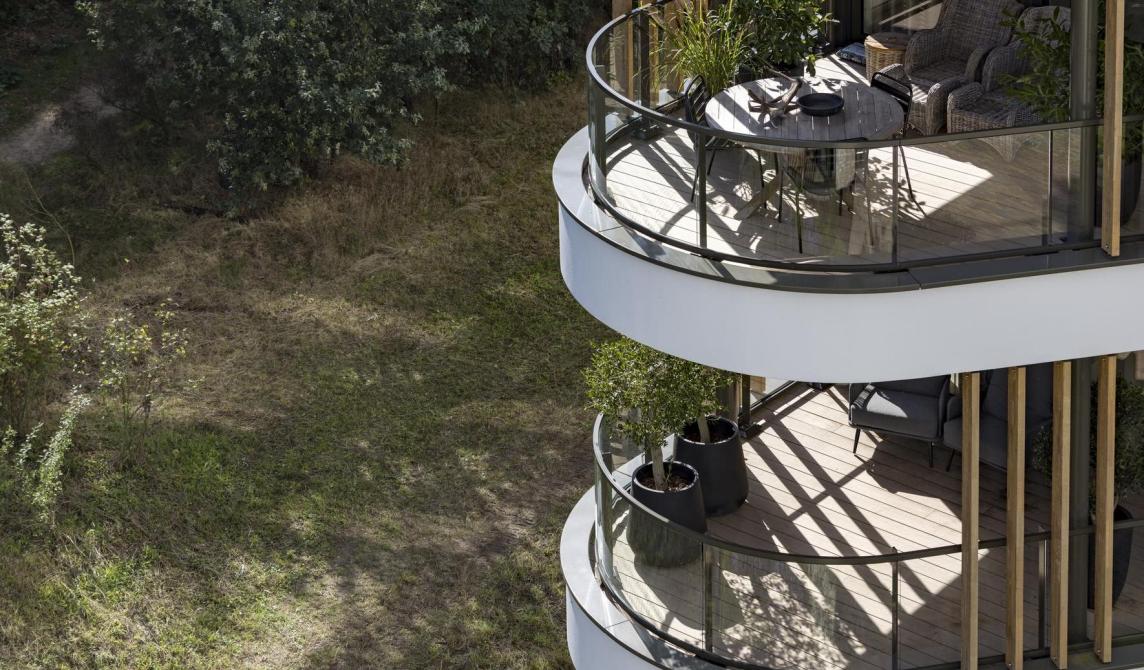
Durability and Waterproofing
It is essential to select decking materials capable of resisting climate variations, particularly frost, humidity, and heat, in order to guarantee the longevity of your installation. Composite boards, for example, are designed not to warp or crack under the effect of extreme weather conditions, which reduces the risk of frequent repairs. On the other hand, natural wood may require specific treatment to prevent degradation related to humidity and UV rays. By choosing durable materials, you invest in a deck that will maintain its appearance and functionality over the years, while minimizing maintenance costs.
Silvadec Specifications
Waterproofing and drainage
To guarantee water drainage and protect the structure's waterproofing, it is essential to provide a slope of at least 10 mm per linear meter in the direction of the joists. This will prevent any water retention at the low point of the deck. Additionally, good ventilation under the deck is necessary, with a space of at least 50 mm under the boards to ensure adequate aeration.
Joists and their installation
Joists, whether made of composite wood or aluminum, play a key role in the deck's durability. They must have a minimum width of 42 mm and be installed with a maximum spacing of 40 cm (center to center), adjusted according to the angle of the boards. It is crucial that the joists do not rest directly on the ground, and that they are properly stabilized, especially if installation is done on pedestals or a concrete slab. If the ground is simply drained but not stabilized, concrete shims must be used.
Slab, pedestals and stability
The deck can rest on a flat slab or on adjustable pedestals. In the case of stabilized ground, it is recommended to use polymer pedestals to guarantee a good base for the joists. The structure must be well leveled to avoid any sagging and guarantee the long-term stability of the deck.
Spacing and board installation
Decking boards must be installed respecting a 5 mm spacing in width to allow for thermal expansion and water drainage. It is also recommended to follow the brushing orientation of the boards for a uniform aesthetic finish. The use of hidden fastening clips, in stainless steel or aluminum, helps reinforce stability while maintaining aesthetics.
Fastening and finishing
Stainless steel clips or removable clips should be preferred to fix the boards without visible screws, guaranteeing a more careful and durable installation. In case of frequent disassembly necessity (for waterproofing access, for example), the use of removable clips is ideal. If screws must be used, these must be specific for composite wood and require mandatory pre-drilling.
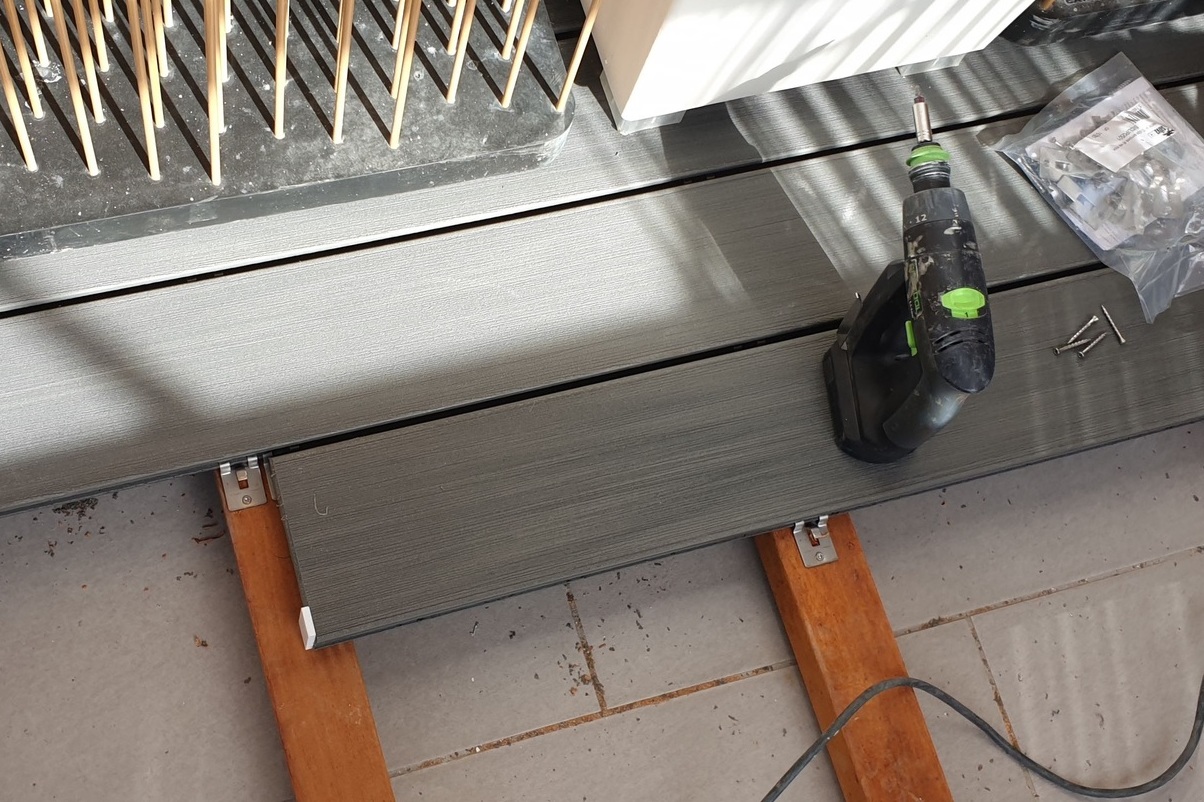
Compliance with Silvadec Installation Principles
In the case of a Silvadec deck installation, by respecting the recommendations for ventilation, drainage, joist and board spacing, as well as adequate fastening, you will ensure a permanent, stable and aesthetic installation of your composite wood deck, suitable for balcony or outdoor space conditions.
Before any Silvadec deck installation, consult and follow the installation principles established in the Installation Manual PU7
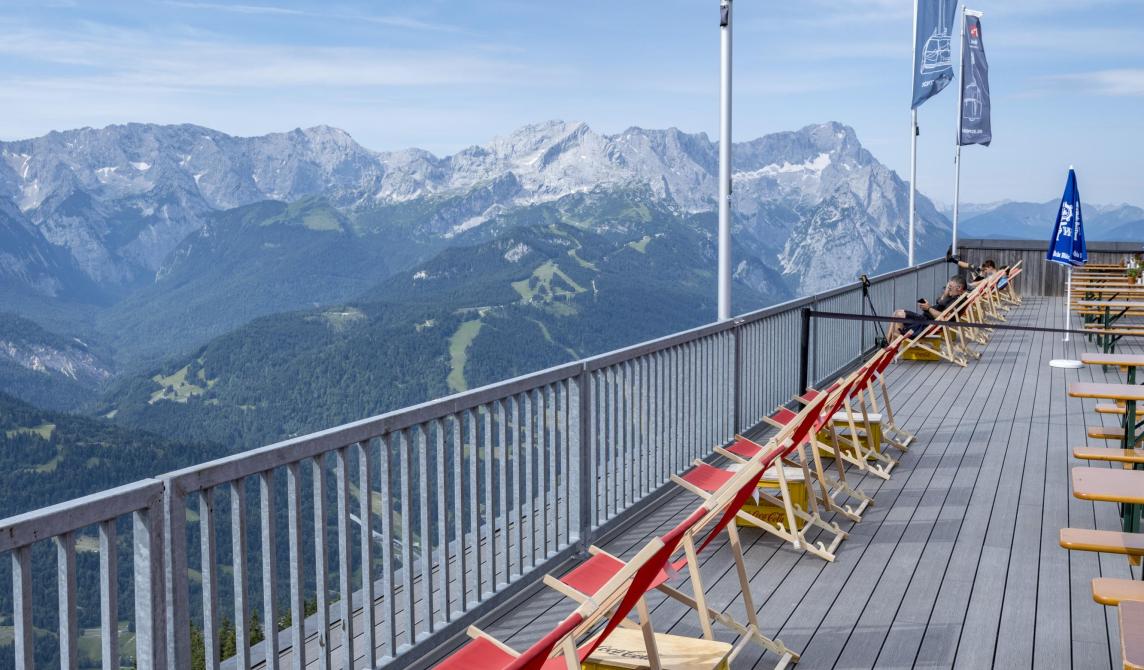
The Budget
Establish a clear budget that covers all aspects of your project:
Initial Costs
When evaluating the initial costs for your deck project, it is essential to consider not only the price of the boards, but also that of the joists, accessories such as screws and joints, as well as labor costs. Boards can vary considerably depending on the type of wood or composite chosen, thus influencing the overall budget. Additionally, joists, which provide the structure and stability of the deck, must be of quality to guarantee durability. Don't forget to include potential costs for site preparation and possible equipment rental, which can also impact the total project cost.
Long-Term Maintenance
Long-term maintenance of a solid wood deck is a crucial factor to consider, as it can generate significant costs. This includes regular treatments with stains or oils to protect the wood against weather, insects, and graying. Furthermore, repairs may be necessary in case of deterioration, such as cracked boards or weakened joists, which adds to the financial burden. Evaluating these maintenance costs will allow you to establish a realistic budget and decide if a composite material, often less demanding in maintenance, could be a more economical alternative in the long term.
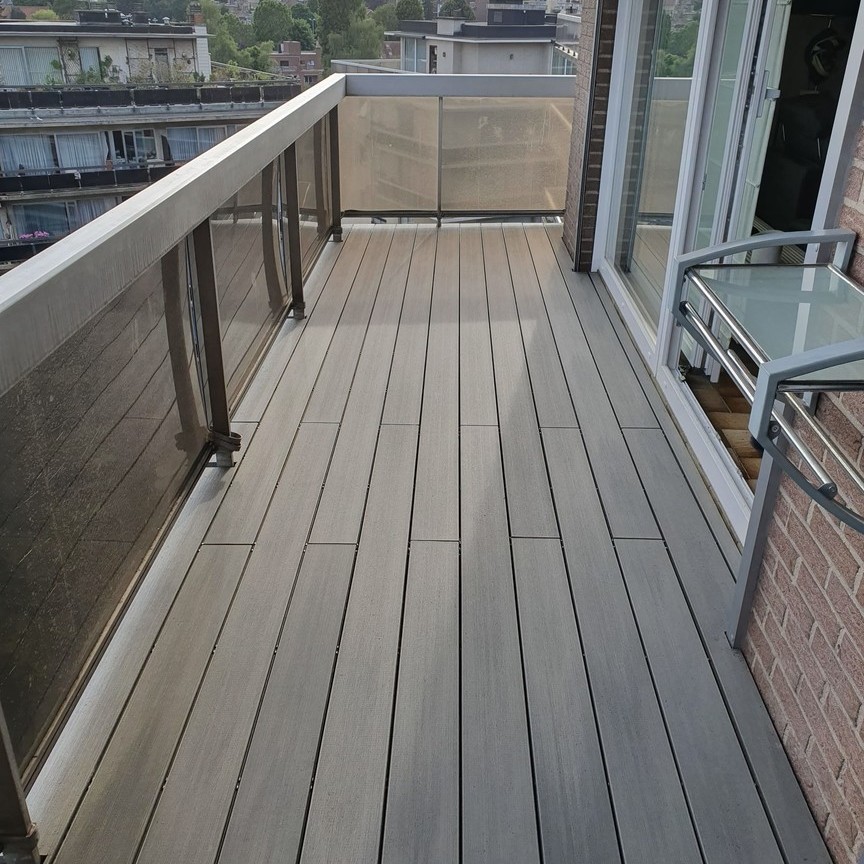
Case Study Example: A Balcony in Brussels
A notable project completed by the company Terrapac in 2020 in Brussels demonstrated the challenges and solutions associated with deck installation on a balcony. Located on the 8th floor, this 11 m² balcony required rigorous logistics, with supply by lift. The team installed an EPDM membrane to ensure optimal durability and chose boards from the Atmosphere range in Cayenne gray, offering excellent slip resistance. This project (read here) perfectly illustrates the importance of safety and durability in outdoor space development.
#balcony #wood #composite #durability #maintenance #materials #safety #deck




















